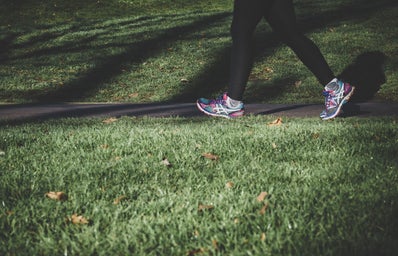By Eliza Shaw
Some would argue the prevalence of sexism in sports has decreased recently––which may be true to some degree––but in my opinion, progress has not been nearly sufficient in terms of timing or scope. Examples include women getting paid less than men for equal if not superior work; greater support and publicity for male versus female leagues, teams, and players; less funding and advertising for women’s sports; the inability of women to play in male leagues; the existence of female cheerleaders – who, to compound the chauvinism, are paid inadequately if at all for their services; and stereotypes attributed to female athletes in sports such as softball, basketball, and fighting.
Beginning with the most obvious and confounding example of sexism in sports, female athletes are paid significantly less than their male counterparts, both in terms of contractual arrangements and championship pay. For example, not until 1973 did the US Tennis Open equalize pay for the women’s and men’s singles champion, and Wimbledon did so a mere decade ago in 2007. In other major tennis tournaments, such as the Western & Southern Open in Ohio, the male winner only two years ago received substantially more than the female champion. In no way does this make sense as they both went through the same number of rounds and worked equally as hard. In that Ohio tournament, the men’s champion was Roger Federer and was awarded $731,000, while the female winner, Serena Williams, was given $495,000, 63 cents on the dollar. There is no valid excuse for a $236,000 difference in pay for two people having played the same sport and achieved first place.
A marked pay difference also exists in sports other than tennis. Generally speaking, women’s sports leagues have a much lower salary cap than men’s, and therefore have less money to pay their players and entice an audience. Some would argue that the popularity of women’s athletics is significantly less and justifies a lower cap. But the fallacy of that argument is apparent in women’s soccer, where a June 15, 206 The Atlantic piece said the following:
“With four Olympic gold medals and three World Cup championships (the most recent of which netted more than 23 million viewers for the final game)—the women’s national soccer team has undoubtedly outperformed their male counterparts in recent years. Given all this, how can the U.S. Soccer Federation (the body in charge of professional soccer in America) possibly justify paying female pro-soccer players less than their male counterparts?”
This disparity led to five players from the women’s team filing suit and alleging discrimination before the Equal Employment Opportunity Commission. They alleged the U.S. Soccer Federation was liable for wage discrimination and claimed that despite their success, male players still earned more just for showing up. The “Equal Play, Equal Pay” ultimately succeeded, since in April 2017 a new collective bargaining agreement gave the female soccer players a “sizable increase” in base pay and bigger bonuses, improved travel accommodations and working conditions, control over some licensing and marketing rights, more support for the National Women’s Soccer League, and more support for players who are pregnant or adopting a child.
Another example is depicted in the article “Top WNBA Salaries: Who Gets Paid More.” It states that the salary cap for a WNBA team is around $878,000 while the NBA’s is $58 million per team. This means that WNBA players are not able to get paid as much as male players who do the same work. Both genders practice abundantly and work extremely hard in games, yet their pay is vastly disparate.
On that same note, because of the lower salary cap for women’s teams, they have much less money to spend on advertising and other forms of publicity as compared to male teams. According to the University of Minnesota’s Tucker Center for Research on Girls & Women in Sport, women’s athletics receive only about 4 percent of all sports media coverage. As a result of both decreased coverage and less advertising in women’s sports, many people are unaware of their talent and deem them lesser athletes than men. Generally speaking, women get much less popularity, money, and acclaim compared to men for their respective talents.
Another huge area of sexism in sports involves cheerleading. If women are hired to cheer at men’s games then why isn’t the opposite true? The answer no doubt is that men own these teams. Women cheerleaders are objectified and ogled in their skimpy and inappropriate outfits and often treated with extreme disrespect by coaches, players, fans and owners alike. For example, the Buffalo Bills cheerleaders – called the Jills, no less! – received absolutely no pay for any of their services, and they had to pass what was called the “jiggle test” to keep their ‘jobs’ – do ten jumping jacks and face termination for those who deemed “too flabby”! Men objectify and believe they can treat cheerleaders like dolls and say or do whatever they feel to them. Clearly, the cheerleading institution lacks equality, dignity, and respect for women.
Many stereotypes exist in sports, none more so than women’s. For example, men believe most if not all softball players are lesbian. First, that is patently untrue, and second, it is also implied that being a lesbian is something to be ashamed of. Thinking logically, if female softball players are thought of as lesbian shouldn’t male baseball players be expected to be gay?
This issue is no doubt complicated since revenues are often tied to the inequality and sexism in sports. But women’s tennis and soccer are often equally if not more profitable than men’s, so the case for equal––if not higher pay––is obvious. While there is no simple solution in other sports, I believe a good starting point is to allow capable women to participate in men’s leagues, such as the NHL, NFL, NBA, and MLB. The stereotype that women are not as strong as men should be able to be tested by women playing with men. We as a society must raise awareness for this area where women are still treated unfairly. Beyond that, fight for your right and make sure people hear your voice!
Want to keep up with HCBU? Make sure to like us on Facebook, follow us on Instagram, check out our Pinterest board, and read our latest Tweets!


